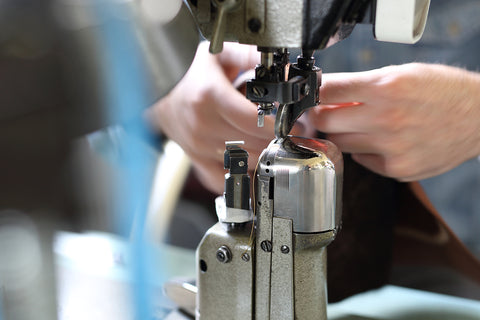The Different Types of Industrial Sewing Machines: Body Design
Posted by Joseph Park on

Previously, we briefly discussed the different types of industrial sewing machines according to the stitches that they do. Now, we’ll be providing you with a brief background on the different types of industrial sewing machines based on the kind of body design they possess.
Most people are likely familiar with the quintessential look of a traditional sewing machine — a flat bed, an arm that rises in an arch over it, and a needle and presser foot that engage the throat plate that lies flush with the bed.
Such is the structure of most industrial and domestic sewing machines, so much so that not a lot of people are aware that industrial machines actually come in other designs. These design variations are meant to make professional sewing as hassle-free as possible. The units are engineered to accommodate workpieces of particular configuration, thus helping make the production process more efficient and less time-consuming.
These basic industrial sewing machine design varieties are as follows:
Flat-bed sewing machines – These sewing machines feature a flat bed and resemble regular domestic sewing machines. The flat bed design is helpful for sewing workpieces that have to be laid flat on the machine bed and on the table.
Long-arm sewing machines – A variation of the flatbed sewing machine, long-arm sewing machines have longer beds upon which larger fabrics or workpieces can be worked on. Long-arm sewing machines are typically used for sewing materials like umbrellas, tarpaulins, awnings, upholstery, luggage, tents, and various sports, travel, and outdoor equipment.
Cylinder-bed sewing machines – Instead of a flat bed, cylinder-bed sewing machines have tubular-shaped beds, which allow for easy sewing of cylindrical or tubular workpieces like shirt cuffs, caps, bags, shoes, and so on. The length of the cylindrical bed can vary from machine to machine.
Post-bed sewing machines – Post-bed sewing machines feature a raised column that that engages the needle way above the surface of the bed. This vertical column allows users to easily work with otherwise problematic items like boots, shoes, bags, automobile upholstery, awnings, and tents. The height of the column varies from machine to machine.
Feed-off-the-arm sewing machines – A feed off the arm sewing machine’s design is unusual in that its arm bridges a u-shaped bed. Such machines are ideal for seaming the inseams of pants and jeans as well as the sides, sleeves, and shoulders of shirts.
Large sewing businesses that produce a variety of products normally house a full range of these sewing machines. Additionally, they also usually have different machines that perform specific stitches (e.g lockstitch, chainstitch, overlock stitch, and coverstitch) and other tasks like creating buttonholes, sewing buttons, bartacking, and so on.
Share this post
- Tags: cylinder-bed sewing machines, feed-off-the-arm sewing machines, flat-bed sewing machines, industrial sewing machines, long-arm sewing machines
